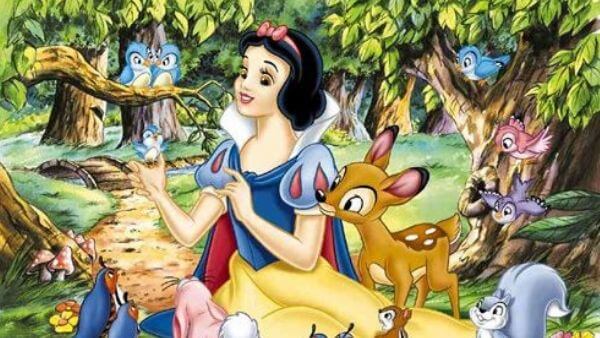Storytelling activity for kids: 5 Engaging tips to tell great stories to your kids

Introduction:
Storytelling is as old as human civilization. The first stories we discovered were in the form of cave paintings done by the pre-historic man on the walls of ancient caves. These stories were carried forward through generations and are verbally recited to our kids who are able to visualize and fly with the wings of imagination while listening to the stories. The stories also teach life lessons to the children in a subtle way.

The stories were then printed stories and further evolved to become a movie or television series. But the verbal storytelling format is an all-time favorite for kids and even adults. In the olden days there used to be a storyteller who used to sit under a banyan tree, narrating stories to children or villagers. Also, there were professional storytellers in the palaces to entertain the kings and their courtiers.
Benefits of storytelling for children:
There are many hidden benefits of telling stories to your kids. Some of them are-
- At an early age, the child’s concentration and listening skills develop when he/she hears a story from the parent.
- The story can spark a child’s imagination, and help stimulate curiosity.
- Every story comes with a meaningful message. With this message, you can inculcate a few virtues like courage, wisdom, honesty, empathy, etc in your child.
- Through stories, our child becomes aware of his/her roots and culture. He/she also gets to know about different cultures and traditions.
- When the child listens to the stories and remembers them it is an exercise to make brain memory sharper. Further, we can ask our child to recite the story in his/her own words which will improve his/her language skills.
- The child learns the difference between real and make-belief. Stories will help understand frightening events and how to come out of it. He/she also becomes aware of emotions such as pain, suffering, loss, win, happiness, sharing, etc. which are a part of life.
- The child gets to know new words and language which in turn helps, develop literacy skills, which will also help him/her to progress in academics.
- Finally, stories can be used to teach values, life skills, understand complex themes and have fun at the same time.
Storytelling activity for kids – Kind of stories to tell to children:

We as parents need to do a bit of research before we start the storytelling activity for kids. We need to keep in mind their interest, age, and gender of the child while picking up a story. Most of the times I would love to tell a story to my son which I loved to listen in my childhood from my parents. Stories can be classified into folk tales, classics, epics, fairy tales, moral stories, Jataka tales, etc.
Such stories are centuries old which have been passed on through oral storytelling, and now available in the form of books with lots of colorful pictures. Stories can also be in the form of rhymes, pictures, and songs.
Sometimes we ourselves can use our imagination to create stories or relate some incident that happened to us or somebody in our family in the form of an interesting story. When a character of the story is given the same name as that of your child, your child will show more interest in listening to the story.
How should parents narrate stories to their kids?

When you plan to tell a story to your child, it is very important that you make sure that the child doesn’t get bored or lose interest in listening to your story. For this, the story should be of the right length, neither short nor too lengthy. Some other points to keep in mind are-
1. Place and time of storytelling:
The place and time should be such that there are no distractions. Before sleep when the child is just in the company of his/her parent would be the best time. The other options are while traveling, waiting for someone, having a stroll, etc.
2. Introduction of the story:
Before you start a story, see that the child settles down and is ready to listen. Start the story by relating to an incident, character or a scenario familiar to the child. If you are reading it from a storybook, let the child handle the book and look at the pictures. This will arouse his curiosity and he will be ready for the story.
3. The narration of the story:
When you narrate the story, your voice should be loud and clear. The tone and pitch should vary depending on the requirement of the story. Also, make sure there are appropriate pauses as the story proceeds. Proper hand gestures and facial expressions are also important when narrating a story.
4. Involvement of the children:
Make sure that your kids are listening by asking questions or making them guess what next while telling the story. This will spark their imagination and at the same time hold their attention.
5. Customize the story:
When you observe that the child is coming across unfamiliar terms or situations, replace it with that which is familiar to your child.
You can make your storytelling activity an interesting affair. How?
Use of pictures, masks, puppets, etc can add a zing to the story. Asking the child to do an activity and then relating it to the story you are telling is also a good way to draw the interest of the child into stories.
For example, asking the child to draw a fish and then tell a story about the fish is one activity. Or once a story is told, it can be dramatized with the kids enacting different characters in the story.
Storytelling activity for kids: What stories to narrate?
Stories can be classified into different categories depending on the age of the children. Very young kids would like fairy tales which take them into the world of fantasy. Also, the moral stories, Jataka tales with animal characters, Hitopadesha stories, etc., entertain the child as well as instill in them moral values.
As the child grows he/she would like fantasy stories where the hero has a series of adventures like in the Arabian Nights. Then comes the classic stories, travel stories, fiction, real-life stories, horror stories, science fiction, mythological stories, historical stories, etc.
Closing thoughts:
In today’s times of digital technology, more and more kids are getting glued to the television, computers, tablets, phones. Ipads etc. This means of entertainment is putting a wall between the parent and the child and in the process depriving them the joy of listening to the stories and connecting with each other.
More than anything else, storytelling is a tool to bring the parents and the kids together, and create everlasting happy memories. At the same time, storytelling imparts important life lessons to the kids.




